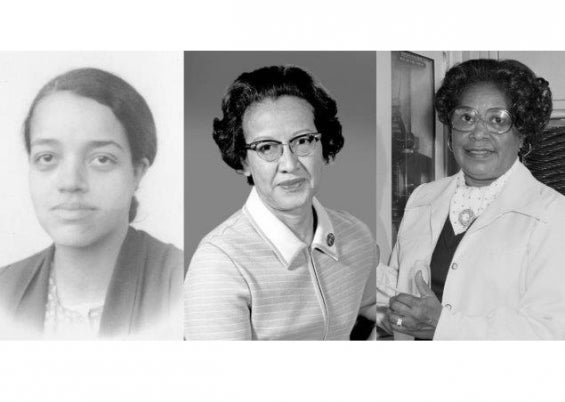Headline News
The “Hidden” Women of NASA

The movie “Hidden Figures,” released in Fall 2016, is based on Hidden Figures: The Story of the African-American Women Who Helped Win the Space Race, a 2016 non-fiction book written by Margot Lee Shetterly. The movie takes an in-depth look at a team of black National Aeronautics and Space Administration (NASA) female mathematicians who were the behind the scenes “computers” for the 1962 mission. The central figures in the movie are Katherine Johnson, Dorothy Vaughan and Mary Jackson. Johnson, an extraordinarily gifted mathematician, played a key role in helping John Glenn become the first American to orbit the earth. Vaughan eventually became NASA’s first black manager and was considered one of the agency’s most brilliant minds. Jackson overcame entrenched segregation and other obstacles to become NASA’s first black female engineer.
The movie only scratches the surface of the contributions these talented women made to the space program. Katherine Johnson was born on August 26, 1918, in White Sulphur Springs, W.V. She received her Bachelor of Science, with highest honors, in mathematics and French from West Virginia State College in 1937. She then attended graduate school at West Virginia University, leaving after the first session to start a family. Once her children became older, Johnson taught public school in Virginia until June 1953, when she joined NASA’s predecessor agency, the National Advisory Committee for Aeronautics (NACA), at their Langley Research Center. Two weeks into her tenure, Johnson was assigned to the Maneuver Loads Branch of the Flight Research Division.
In this position she analyzed mountains of data from flight tests. She remained with the branch for the majority of her career. In 1962, she was asked by John Glenn to re-verify by hand that the computer programmed equations that would control the trajectory of his Friendship 7 spacecraft were correct. “If she says they’re good, then I’m ready to go,” he said. Indeed they were, and Glenn’s mission was a success. Johnson remained with NASA until her retirement in 1986.
In 2015, Johnson was awarded the Presidential Medal of Freedom, the nation’s highest civilian honor, by President Barack Obama in a ceremony at the White House. Johnson is still alive today, always proud of her achievements in helping the United States reach a historic milestone.
Dorothy Vaughan was born on Sept. 20, 1910, in Kansas City, Mo. She received her Bachelor of Arts in mathematics from Ohio’s Wilberforce University in 1929. She then moved east and taught math at Robert Russa Moton High School in Farmville, Va. In 1943, during the height of World War II, Vaughan left teaching and started at NACA’s Langley Memorial Aeronautical Laboratory’s West Area Computing unit. This was a group of all-black female mathematicians who worked in segregated facilities. In 1949, Vaughan became the unit’s section chief, making her NASA’s first black supervisor. In 1958, when NACA became NASA, the segregated offices, including the West Area Computing, were abolished. She and many of her colleagues joined the new integrated Analysis and Computation Division. Vaughan remained with the division until her retirement in 1971. Vaughan died on Nov. 10, 2008, and is remembered for her historic breakthroughs at NASA.
Mary Jackson was born on April 9, 1921, in Hampton, Va. She graduated from Hampton Institute with a Bachelor of Science in Mathematics and Physical Science in 1942. She held a variety of teaching and clerical jobs until 1951, when she joined the West Area Computing unit. In 1953, after working for engineer Kazimierz Czarnecki, she decided to pursue a graduate degree in engineering from the University of Virginia. She was encouraged by Czarnecki to do this, which would eventually lead to a promotion from mathematician to engineer. However, since classes were held at the then-segregated Hampton High School, Jackson needed permission from the city of Hampton to enroll. Never flinching, she completed her degree, earned her promotion, and in 1958 became NASA’s first black female engineer. Jackson remained with NASA until her retirement in 1985. She was very involved with the community and took to mentoring aspiring NASA mathematicians and engineers. Jackson died on Feb. 11, 2005, and is remembered for her historic contributions to NASA.